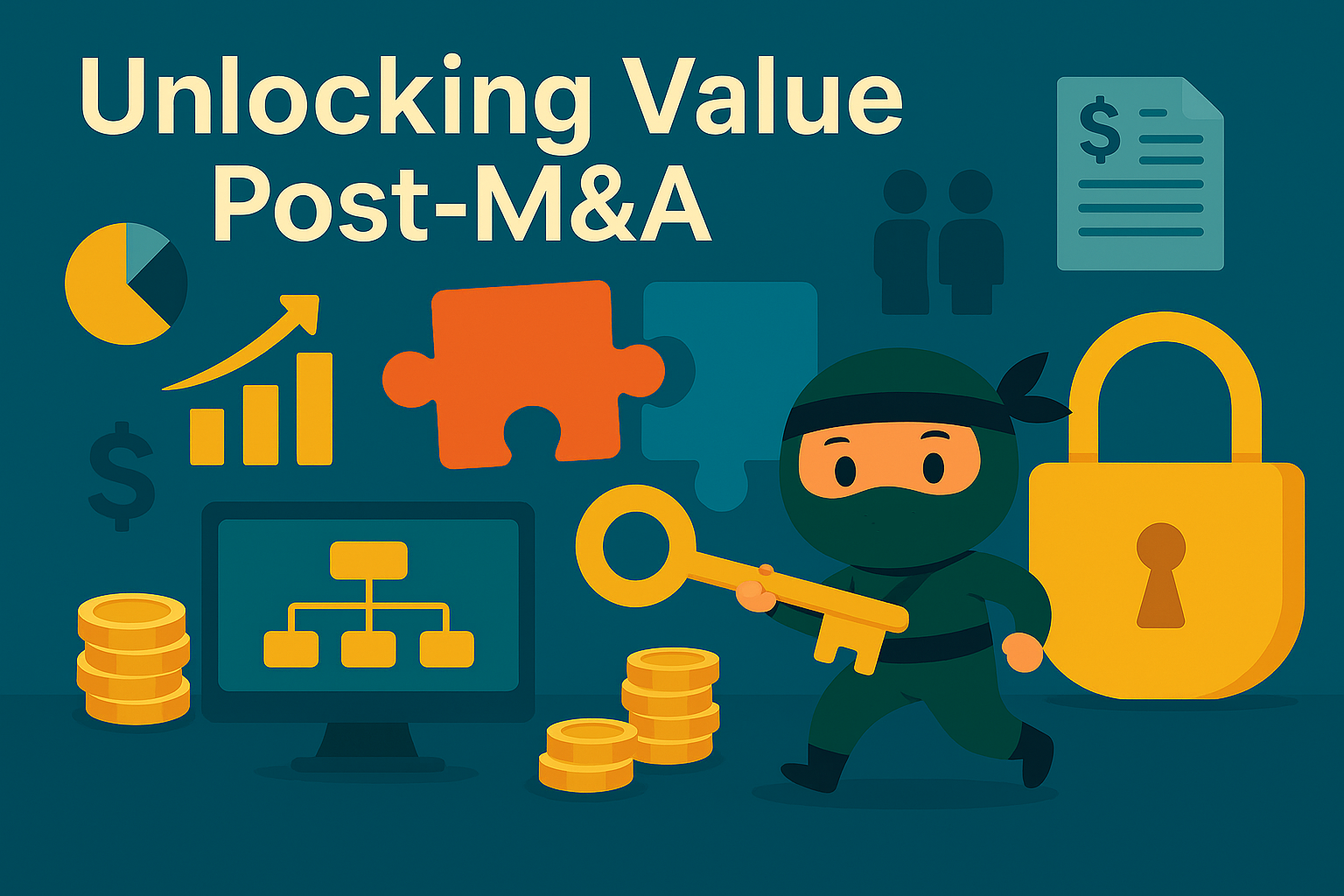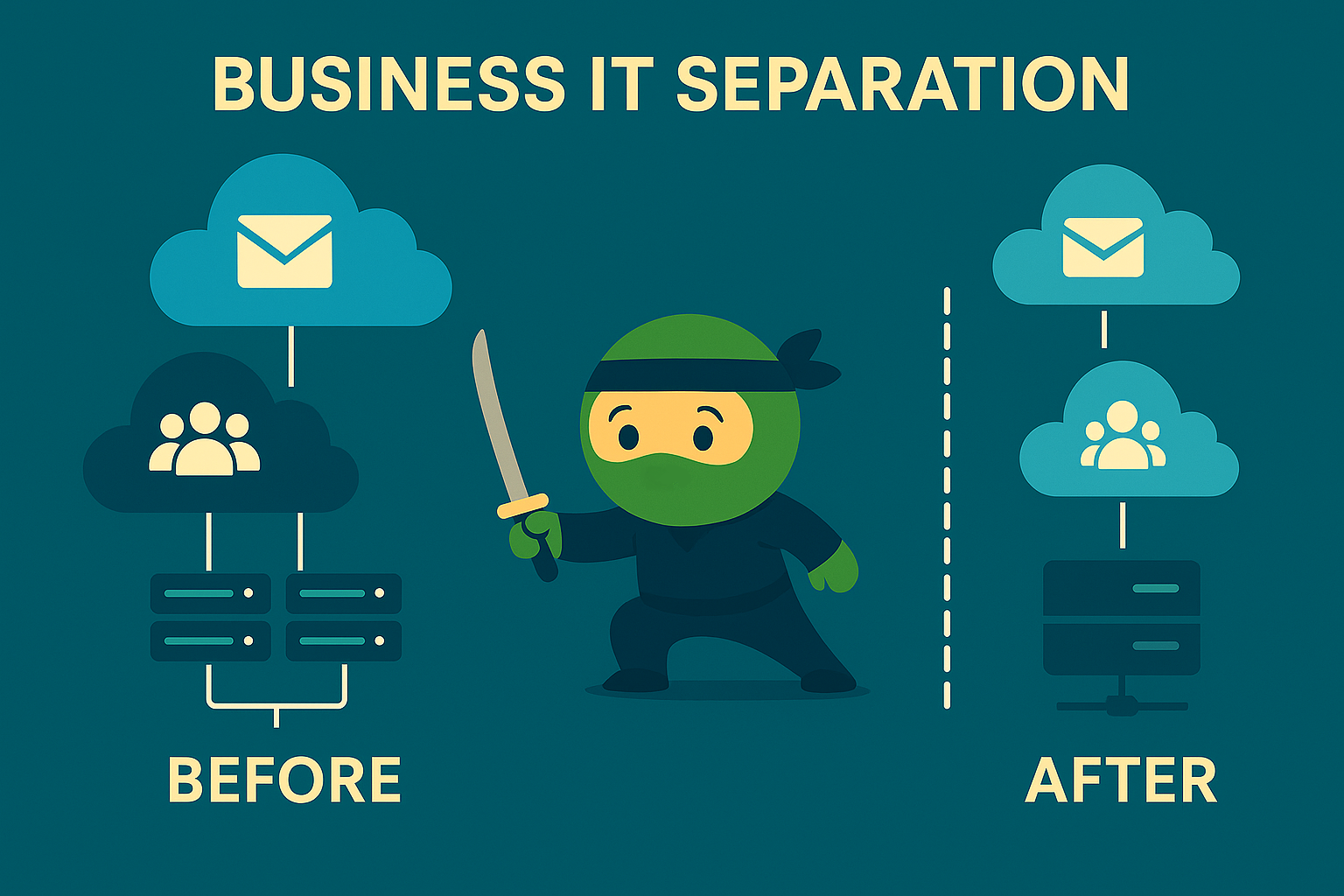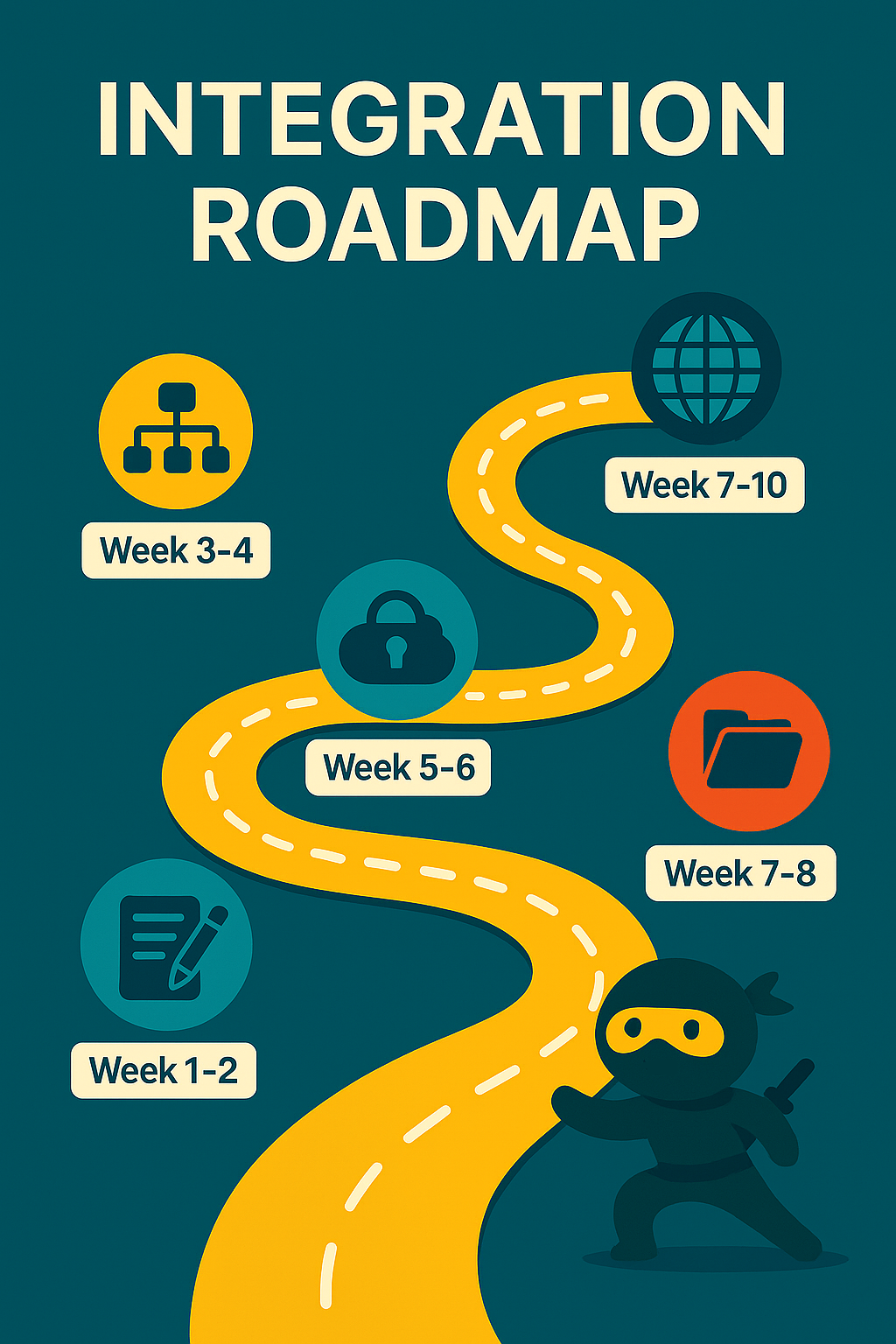While most M&A discussions focus on systems and financials, true value realization often comes later – when teams are aligned, tools are rationalized, and IT operations evolve into a strategic advantage.
Here’s how Stelth guided one acquisition through that transition – transforming a vendor-dependent office into a seamlessly integrated part of the parent organization’s IT fabric.
Background: A Classic Asymmetrical Acquisition
The acquiring company was a mid-market healthcare platform running a modern stack: Netsuite ERP, Salesforce CRM, and Microsoft 365 for collaboration. Its internal IT team handled infrastructure, security, and operational systems with a mix of in-house engineering and a few strategic vendors.
The target company? A single-site subsidiary using a mix of outsourced providers:
-
An MSP for support and networking
-
A VAR for licensing
-
Ad hoc consultants for Salesforce customizations
-
Google Workspace for email, documents, and calendar
-
QuickBooks for accounting
-
No dedicated IT staff
This wasn’t just a systems integration – it was a full IT uplift and operating model reset.
Step 1: Vendor Audit and Rationalization
Before any tech could be merged, we needed to map out:
-
Who was providing what service?
-
How were those vendors contracted and paid?
-
What licensing was active – and redundant?
We quickly found:
-
Overlap between MSP and VAR services (patching, procurement, licensing advisory)
-
Disparate endpoint tools (different AV, RMM, and encryption platforms)
-
Multiple license contracts for Microsoft and Salesforce – no bundling or volume benefits
What We Did:
-
Consolidated all licensing (Microsoft, Salesforce, AV) under corporate agreements
-
Terminated the local MSP and absorbed user support into the parent’s helpdesk
-
Standardized endpoint protection and device management across both teams
-
Migrated the VAR relationship to the primary procurement channel for streamlined renewals
By doing this early, we reduced IT vendor spend by over 40% and freed up local managers from chasing support across fragmented providers.
Step 2: Operational Design and System Integration
Finance Stack
The subsidiary was on QuickBooks with no integration into the broader finance operation. To keep financial reporting running:
-
We began with direct SQL-based exports from QuickBooks into a staging area
-
Built mapping logic to generate consolidated financials in Netsuite
-
Used this model to complete quarter-end close without disruption
-
Once stable, we migrated full QuickBooks history into Netsuite, eliminating dual system use
CRM
Both companies were running Salesforce, but without a shared schema or visibility.
-
We configured multi-org access with field-level sync between accounts
-
Merged marketing lists and aligned pipelines while preserving sales team autonomy
-
Designed post-close dashboards for leadership with cross-entity visibility
Productivity & Collaboration
The subsidiary used Google Workspace (Gmail, Drive, Calendar), which had to be folded into the Microsoft 365 tenant.
-
We migrated email, calendar, and files to Microsoft 365 using native migration tools and API connectors
-
Created custom labels and filters in Outlook to mirror Google workflows
-
Users were retrained on Teams, OneDrive, and SharePoint
Step 3: Infrastructure, Security, and Identity Alignment
File Servers and Domains
Each office had its own domain controller and file server stack. We:
-
Established inter-domain trust and mapped shared drives for immediate collaboration
-
Migrated files to SharePoint and OneDrive where feasible
-
Fully decommissioned the subsidiary domain post-migration
Endpoint and Security Stack
Workstations at the subsidiary ran SMB-focused tools – no central management, inconsistent patching.
-
Rolled out Intune for MDM and compliance policies
-
Standardized endpoint protection to align with corporate policies
-
Migrated physical servers into Azure, applying the same backup and patch strategy as corporate
The Human Factor: Design Without Disruption
While this deal had no headcount overlap, we still prioritized organizational clarity:
-
Created clear org charts showing system ownership post-integration
-
Documented SOPs for request routing, change control, and security incidents
-
Reassigned technical responsibilities from vendors to the corporate IT team – with escalation paths defined
Outcome: More Than an Integration
By the time the integration was complete, the subsidiary:
-
Operated entirely within the parent company’s IT framework
-
Had eliminated five separate vendors
-
Saw improved performance and user satisfaction across the board
-
Was prepared to scale with zero dependency on legacy infrastructure or siloed workflows
This wasn’t just cleanup – it was enablement.
Why It Matters
The goal of M&A isn’t to stitch two environments together – it’s to create a better one.
At Stelth IT, we specialize in:
-
Turning fragmented vendor ecosystems into strategic partnerships
-
Building unified operating models that actually scale
-
Ensuring no system, tool, or person is left behind
Whether you’re absorbing a single-site target or merging multi-entity platforms, we’ll help you elevate – not just integrate.




